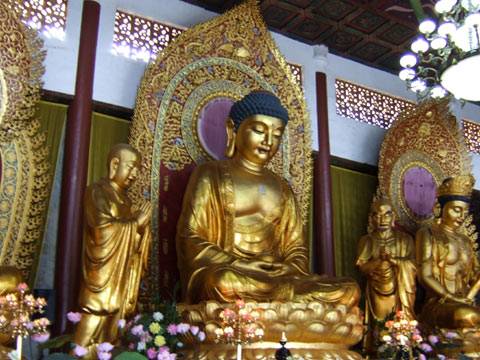Since the ancient times, China has seen the rise of many diverse cultures and religions that have given a unique character to the social fabric of the country. Buddhism originated in India and then spread to China. The Ancient China Buddhism had some unique features that distinguished it from the other religions of ancient China.
Origin of Ancient China Buddhism
By the time Buddhism arrived in China, few centuries had already elapsed since the death of the Buddha. The principles of Buddhism were similar to those of Taoism, which along with Confucianism were the two of the largest religions in ancient China.
The ancient Chinese Buddhism preached ancestor worship along with individual salvation that was considered as beneficial to the family and the society as a whole. It is believed that Buddhism spread due to the major political upheaval that resulted soon after the collapse of the Han dynasty in 220 AD.
It was during the reign of the Southern and Northern dynasties that Buddhism received formal support from the rulers for the first time. Due to the state support, Buddhism flourished greatly during the reign of rulers like Emperor Wu.
It was during the reign of the Sui and Tang dynasties that Buddhism received unprecedented support and mass following.

As China saw the rise of numerous Buddhist monasteries, the religion was split into two sections. One section comprised of followers who abided by the basic principles and philosophies of the Buddha. The other group comprised mainly of village folk who lent a superstitious angle and simplified it greatly.
Some of the eminent Buddhist scholars of that era include Dharmaraksha, Kumarajiva, Seng-Chao, Tao-Sheng, and Fa-hsien. The contribution of these scholars is legendary and has given Buddhism in ancient China a whole new dimension.
One of the key developments in Buddhism is the rise of different schools of Buddhism from the 6th to 10th century AD. Some of the prominent schools of Buddhism include the Lu-Tsung, Chu-she, San-Lun, Chan, Mi-Tsung, and Hua-yen.
By the 11th century, Buddhism in ancient China started declining and Confucianism started regaining importance. In 1280, the Yuan dynasty adopted a form of Buddhism, called Lamaism. Lamaism was the Tibetan form of Buddhism and was inspired by the Vajrayana Buddhism that had emerged in east India at that time.
